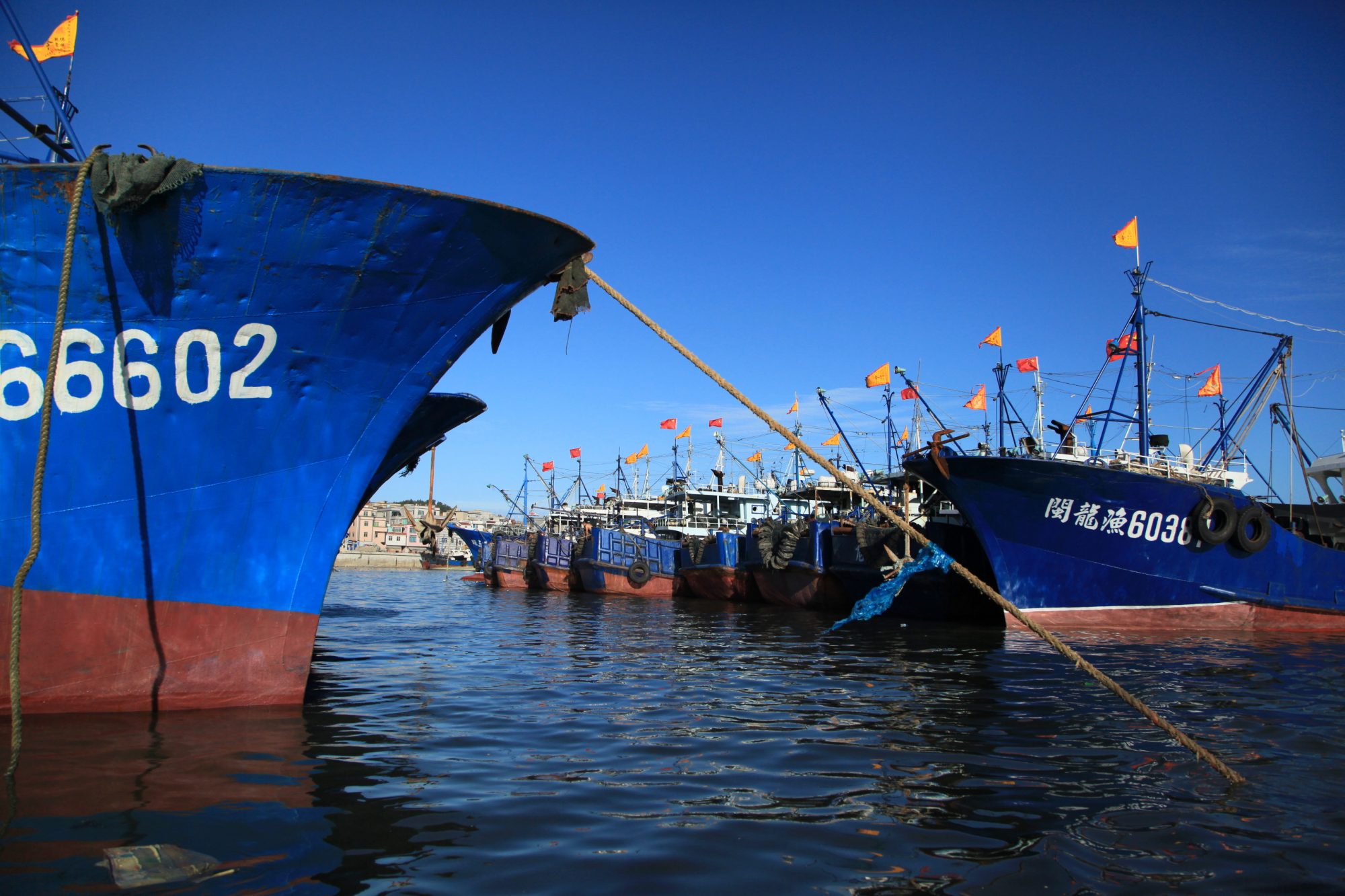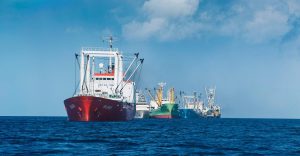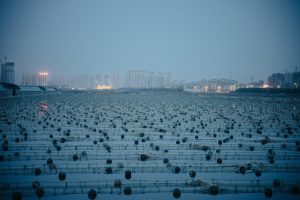Here on the Bohai Sea, Tianjin’s central fishing harbour is welcoming tourists again after being quiet for months due to the coronavirus. Liu Cuibo waves off one group and his phone rings again and again with others arranging boat trips. “Everyone’s sick of being cooped up,” he says, his mood bright.
Liu, 56, started working in fishing after graduating from high school. He was a fisherman for the first 20 years, but in 2013 started taking tourists on fishing trips.
In 2011, residents of the fishing village he was born in were moved into apartment buildings to make way for the high-rises that sprung up by the harbour, and the village was demolished. Once, 160 fishing boats sailed from here – now, only 30 do. Fishing communities all along Tianjin’s 153km coastline have similarly disappeared. The other fishers he knows have either sold their boats and found other work or moved into tourism like him.
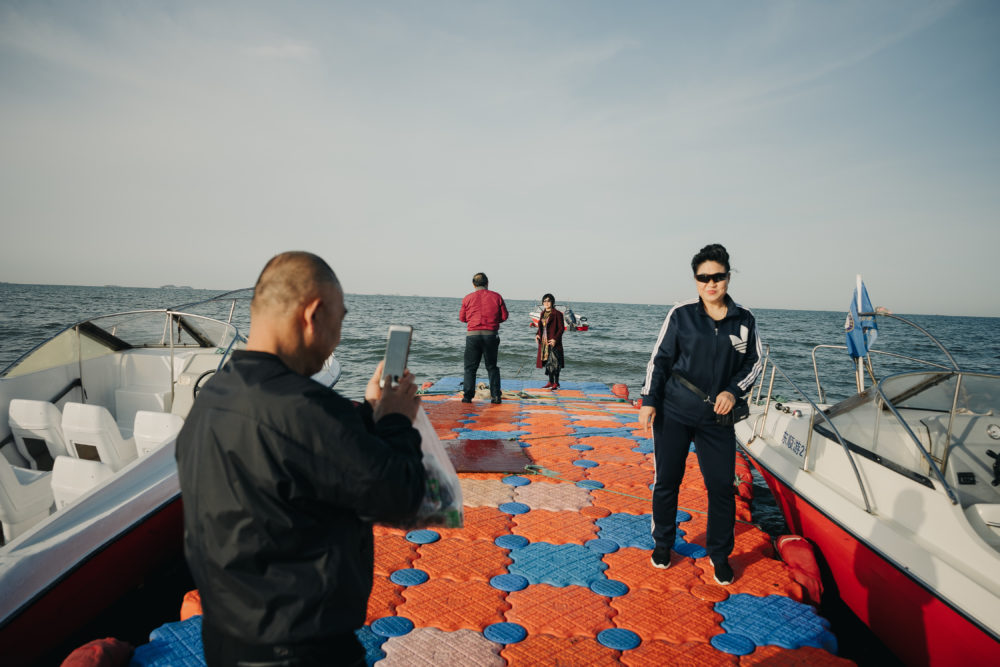
Liu told China Dialogue they have no other option: fish populations have been shrinking, while subsidies have incentivised boat-building, increasing overall numbers and limiting the space for fishing.
China catches more fish from the ocean than any other nation, landing over 10 million tonnes every year since 1995. This is more than the maximum 8 or 9 million tonnes that experts say is safe for the coastal fisheries, which have been depleted by decades of overfishing.
To stem the loss, China has been implementing closed seasons on the Bohai, Yellow and East China seas since 1995, giving some protection to fisheries by preventing boats from operating during critical fish growing and spawning periods. In 2017, those closed seasons were lengthened to up to four months in some places.
According to the China Fishery Statistical Yearbook, in 2008 there were 7.6 million traditional fishers in China. With fish populations depleted, from 2015 the government has acted to reduce fishing subsidies and apply increasingly stringent closed seasons. By 2018, the number of fishers had fallen to 6.2 million.
Meanwhile, the WTO has been working to conclude a deal banning harmful fishing subsidies this year, as part of efforts to reach UN sustainability targets. China’s fishers have little choice but to make changes.
Searching for a way out
Over a decade ago, homestyle fish restaurants became popular along the Tianjin coast, and Liu noticed diners taking an interest in his boat. Seeing an opportunity, he added a seating area to the deck and started fishing in the mornings and taking tourists out on boat trips in the afternoons. His income increased and stabilised.
He remembers that fishing was becoming less profitable back then. “There was no good fishing season. Now you might get a bit of a good season, but only for mantis shrimp.” Good fishers can still make a bit of money, he said, but others are struggling.
But with living standards on the rise, there are more people taking holidays and huge potential for leisure fishing.
Tourists pay 200 yuan (US$29) each for a day’s boat trip and seafood meal, with up to 12 in a group. A good year can see Liu earn 100,000-200,00 yuan.
The local government is encouraging fishers to shift into tourism, organising a fishing festival and designating a marine tourism zone, with sea fishing one of the attractions.
In 2017, the Tianjin government also toughened safety requirements for leisure fishing that necessitated boat upgrades. Liu, planning to expand his leisure fishing business, spent tens of thousands of yuan replacing his wooden boat with a new steel one.
He also started marketing his business. He filmed short videos, just like he’d seen youngsters do, on how to cook seafood. In time he became popular online, and some viewers became his clients.
He’s glad he changed as it’s now more expensive and the government approvals aren’t as easy to get. “You couldn’t make the shift even if you wanted to,” he says.
Gao Mingjun, 51, had fished from Dandong, Liaoning for over 20 years, until five or six years ago when he switched to clam-farming. He was required to hand his boat and its certificate to the government.
Aquaculture involves big initial investments. Gao and eight or nine others each chipped in 500,000 or 600,000 yuan and rented 2,000 mu (133 hectares) of shallows. Clams take two or three years to grow, and Gao says the operation was quite profitable in the early years, making an average of 200,000 to 300,000 yuan a year.
When he was fishing, his annual earnings amounted to only several tens of thousands of yuan, even after receiving 30,000 or 40,000 yuan in fuel subsidies. The aquaculture business pays better and is easier work. He and his partners have bought a boat together for maintaining the clam farm.
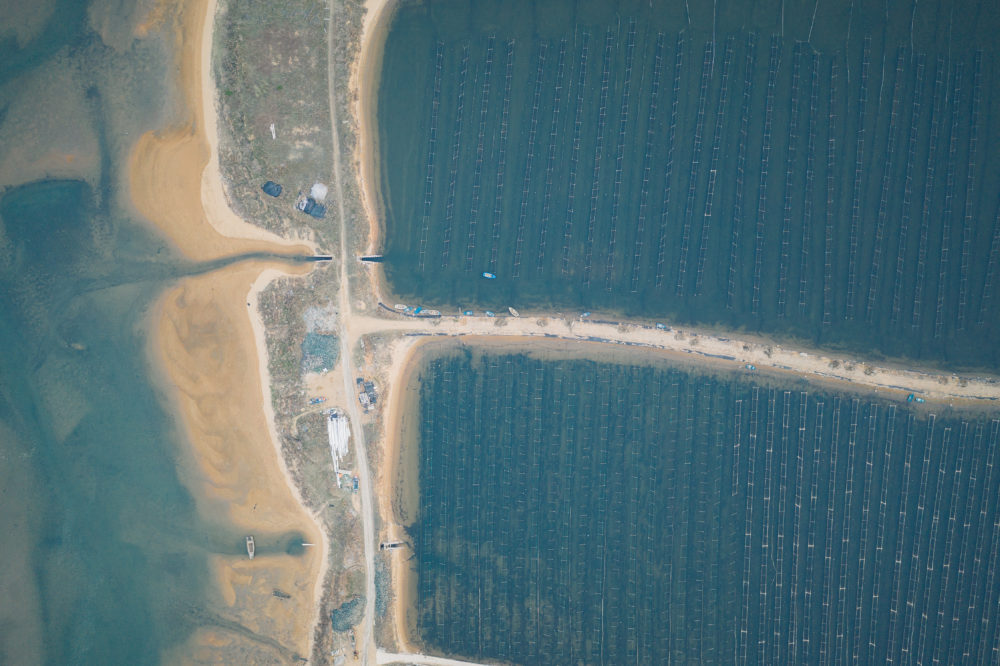
While other local fishers must buy feed for their shrimp and sea cucumber farms, clams feed on plankton and other microscopic organisms already present in the sea.
The work might be easier than fishing, but Gao Mingjun is still busy keeping an eye on the young clams and dealing with customers. There are risks too: algal tides, typhoons and disease.
The good times didn’t last long though. Gao told China Dialogue, clam prices have fallen since October last year. He’s not sure why, but suspects the market has become saturated as more fishers switch to clam-farming.
The coronavirus epidemic also hurt sales, while clam seed prices went up. Gao is not confident about the future but the lease on his 2,000 mu runs for three years, so he and his partners have to keep going. In late April, with the pandemic easing, he travelled to Fujian to buy clam seeds. He will decide what to do when the lease ends – if the clam trade isn’t working out, he says he’ll grow strawberries, a local speciality.
Livelihoods reliant on subsidies
Jiang Xialiang, a fisher in Xiangshan, Zhejiang, saw about four-fifths of the fishers he knew quit around 2008 – the work simply wasn’t profitable, and high fuel costs were only making things worse.
Statistics from the Ministry of Agriculture show the price of diesel fuel rose above 7,000 yuan (US$1,000) a tonne in the first half of 2008 – a 22.5% increase. With a third of boats in some key fishing grounds becoming unprofitable, the central government quickly responded by boosting fuel subsidies 133%.
Jiang estimates one third of fishers he knew made it through only because of that subsidy. He says the payments, which started in 2006, reached their peak in 2014, when he received 300,000 yuan for his 270-horsepower vessel.
The sudden increase made fishers’ lives easier but caused new problems. In 2015, the ministries of finance and of agriculture announced that the industry was becoming over-reliant on the subsidies.
There has long been international concern that fuel subsidies increase the number of motor-powered fishing vessels, and that the more intensive practices made possible by subsidies are worsening the depletion of fish populations. The WTO started exploring ways to reduce fishing subsidies as early as 2001.
In their 2015 announcement, the finance and agriculture ministries said they would aim to reduce, by 2019, the fuel subsidy for domestic fishing (that is, excluding distant-water fishing) to 40% of 2014 levels, and to encourage both a reduction in the size of the fishing fleet, and job changes.
By 2019, Jiang received a fuel subsidy of only 120,000 yuan, rather than the 300,000 of 2014. He grew up by the sea, has been working on fishing vessels since he was 15 and can’t imagine a new career. Now, at 57, “I can’t change direction, I’m like a train on its tracks,” he said.
But shrinking subsidies are forcing some to consider alternative work. Despite his 26 years of fishing experience, Wang Xinyuan, of Dandong in Liaoning, is one of them.
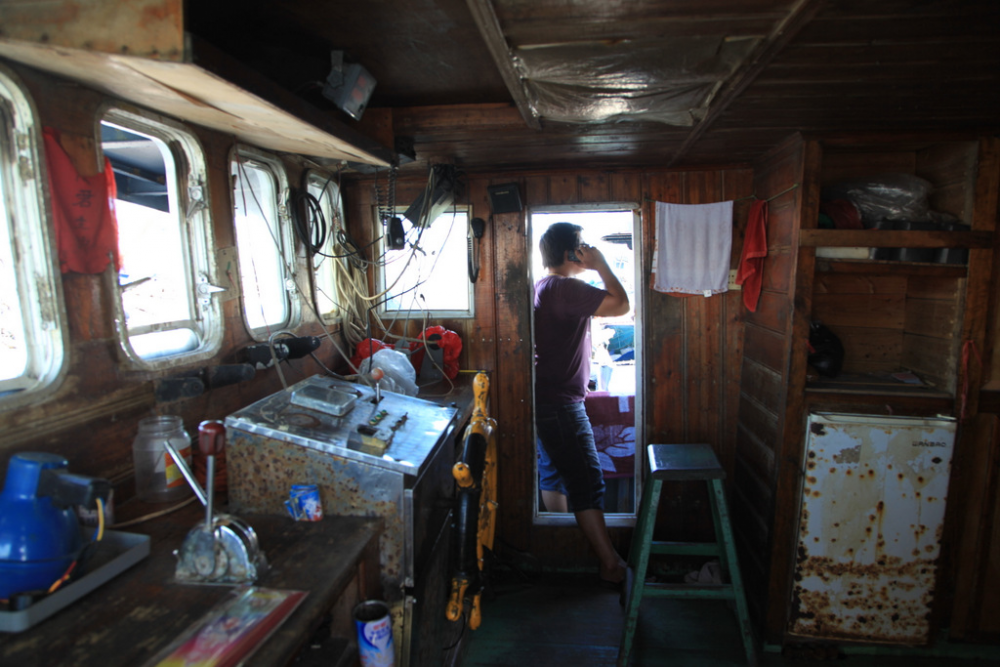
At 46, he has two options: to captain a distant-water fishing vessel working off Africa for a salary of 20,000 to 30,000 yuan a month, or to work on marine ranches off Liaoning. He’s worried about healthcare if he falls ill in Africa, and would risk not getting paid if for any reason he had to return midway through a two-year contract. As for marine ranching, that would involve long stints at sea, only returning home for two or three days a month, and a salary of 7,000 to 8,000 yuan a month.
Wang purchased a 150-horsepower boat in 2016. As a licence for a vessel that size would cost 50,000 to 60,000 yuan, like many other local fishers he opted to skirt the rules and get one for a 12-horsepower boat. But this means smaller subsidies – only 9,000 yuan a year for the last two years.
How can fishing be sustainable?
The subsidies are reducing, but coastal fishing will continue. How can the remaining fishers ensure that fish populations are used sustainably?
Fujian, where Gao Mingjun went to buy clam seed, is trialling catch quotas as part of fishing reforms. Closed seasons haven’t stopped fishery depletion, so other methods are being used to reduce catches but increase incomes.
Li Wei, China fishery policy analyst at NGO the Natural Resources Defense Council (NRDC), told China Dialogue that all coastal provinces are now trialling catch quotas, following on from initial trials in Zhejiang and Shandong in 2017.
China’s Fisheries Law establishes such quotas as a fundamental part of the country’s management of fisheries. Put simply, the aim is to keep fisheries sustainable by catching less than is naturally replaced. The government determines a total allowable catch, and that is allocated across fishing vessels as quotas.
But a lack of data on fish populations, due to inconsistent surveying, makes it hard to set that total allowable catch.
Li Wei explained another problem: “There are too many fishing vessels currently. If a scientifically determined total allowable catch was divided across those boats, each would receive only a very small quota, perhaps too small to be practical. That means pressure on fishers’ earnings. Vessel numbers need to come down as the quotas are implemented, and fishers helped to find other work.” In early 2017, the Ministry of Agriculture said it aimed to reduce the number of motor-powered fishing vessels to 20,000 lower than a 2015 baseline by 2020 – a reduction in total engine power of 2 million horsepower. But even if achieved, at the end of 2020, China will retain over 180,000 motor-powered fishing vessels with total engine power of over 13.4 billion horsepower.
Li Wei also pointed out that China’s coastal fishers usually catch a range of fish species, and that China isn’t yet restricting where they can work. This will make it harder to allocate quotas based on historical fishing data.
These quota trials, which are still in the early stages, aim to monitor and gather data on fishing activity. This includes persuading fishers to fill in logs, designating specific locations for offloading and selling catches, and experimenting with different quotas. But progress across provinces has been uneven and problems have arisen. Li Wei said: “Monitoring quotas is costly and involves significant change in regulatory thinking and models. A lot of resources will be needed to support this process.” That means financial help, government assistance, research and even public education.
The fishers themselves are key to the trials. Li Wei explained that at this early stage the trials cover less than 100 vessels in each province and only apply to jellyfish, shrimp, crab and shellfish – which only take a year or two to grow. Research carried out in Zhejiang and Fujian by an NRDC team found that current quotas are relaxed enough that catches have neither reduced nor market prices increased. The trials, then, appear more targeted at practising the operation of a quota system rather than delivering substantive, long-term changes to fishery resources.
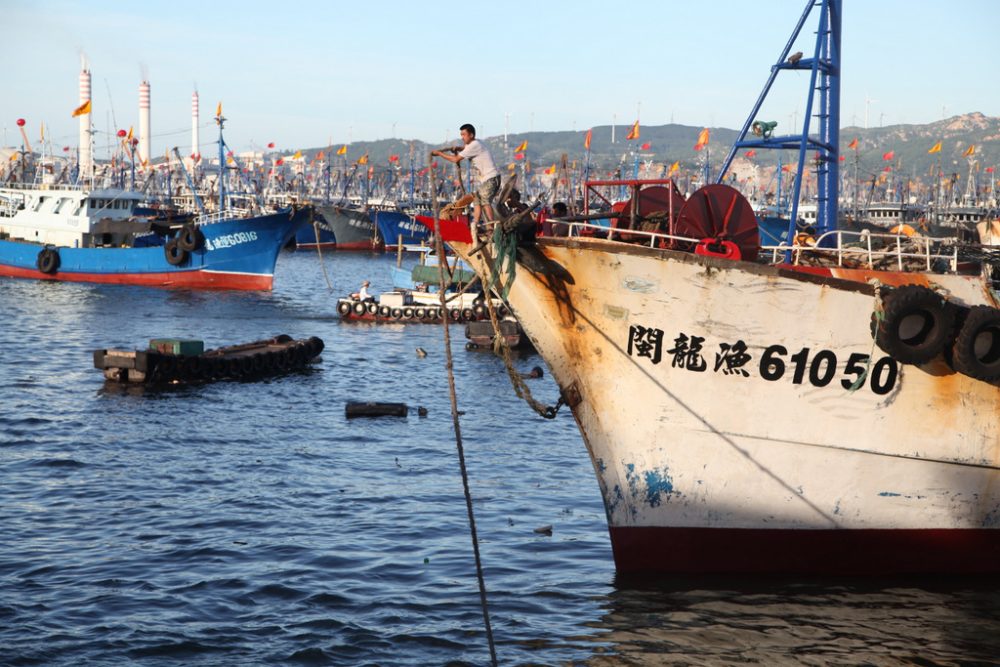
Already facing reduced fuel subsidies, the busy fishers now must fill in logs and can only land and sell their catches at designated locations. This makes their lives more difficult, they’re basically making sacrifices to cooperate with the government’s new approach. Li Wei says this is an essential process which will have long-lasting significance. “Quotas will finally give us a way to manage the ecological balance in coastal fisheries. Many countries have seen resources recover and quality and prices of seafood improve after implementing quotas, with greater profits for the industry as a whole, and in the end the fishers benefit. In the long-term, we can reduce catches and increase incomes.”
It will take some time for fisheries to recover and there is no telling who will last that long – but for many fishers, more change is inevitable.
Wang Xinyuan is a pseudonym to protect the subject’s identity.
